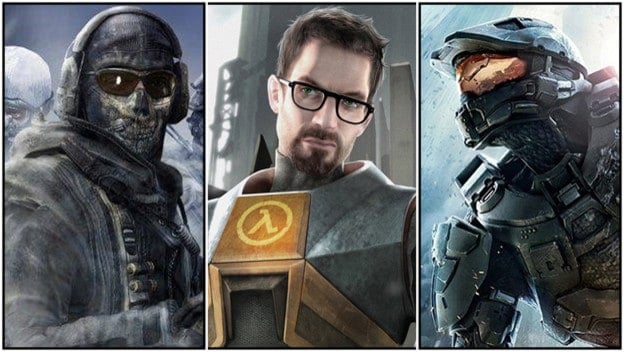Shooters are, at this point in video games, the biggest effin’ releases ever. Every year during the holiday season, several giant, AAA shooters drop to rack up all those sales numbers. The coolest part about shooters though, despite their massive production values and severe violence, is how easily you can use them to track gaming history. Games have evolved through years of iteration, derivative works, and big trends. Shooters have gone through so many drastic phases, it’s remarkable to look back and pinpoint where changes were made. Let’s look back at ten shooters I feel were flashpoints in history.
Resident Evil 4
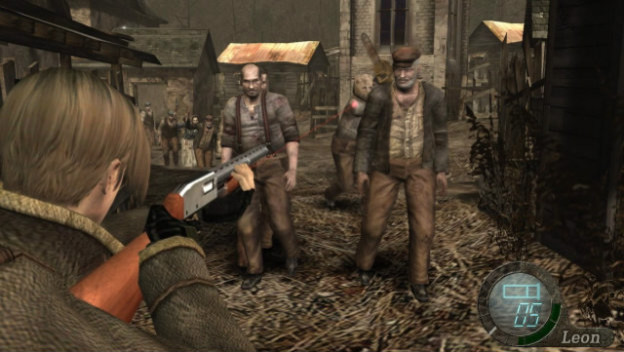
Resident Evil 4 is a survival horror game, but it’s also a shooter. By that I mean, compared to the games before it, Resident Evil 4 actually embraced shooter-style mechanics like free-aiming.
This game broke the dam on third-person shooting action in AAA games. After Resident Evil 4 , shooting games started to try mimicking its style both inside and outside of the horror genre. You could argue that Resident Evil 4 is responsible for blockbusters like Gears of War . The connective tissue is there.
Team Fortress 2
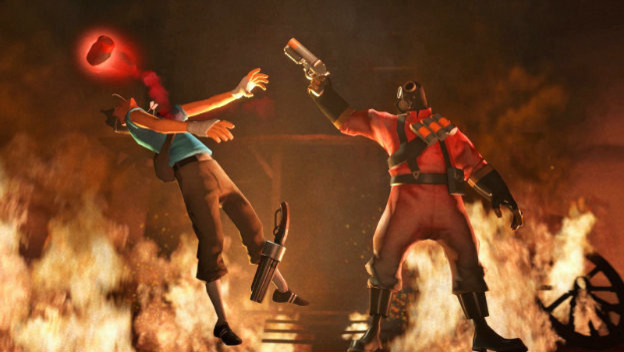
One of gaming’s biggest trends today, besides the battle royale, is the hero shooter. Online shooting games featuring a selection of distinct heroes, each with distinct abilities, are a staple now. (The field is even crowded!) Team Fortress 2 wasn’t quite a hero shooter, as it was more class-based, but it paved the way for more character-oriented experiences. Games like Overwatch are a direct result of the ridiculous success of Team Fortress 2 .
Red Faction
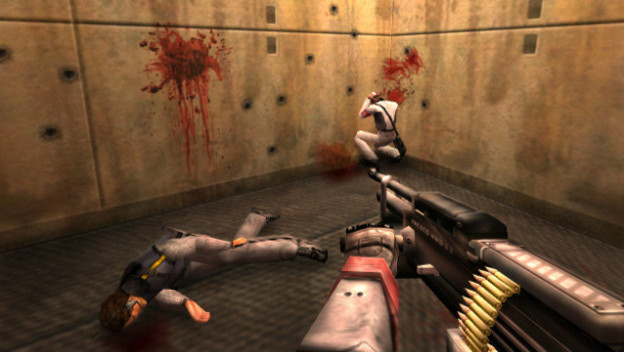
Red Faction isn’t one of those games you hear about too often, although the series is still alive and relatively well. While it is primarily a shooter that directly confronts working class politics, it also had a huge element of destructible environments. Even on the PS2, you could knock down buildings and other structures in ways you couldn’t before, especially on consoles. That sort of demolition was unprecedented at the time!
Halo
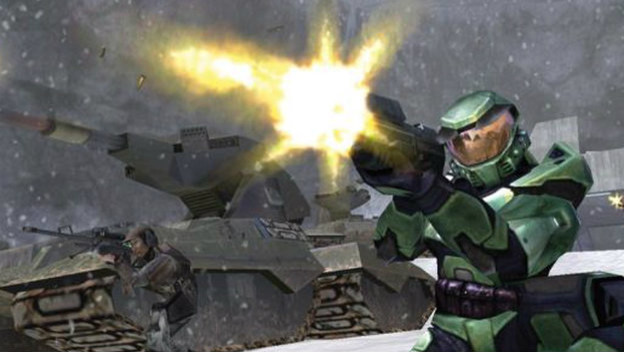
Halo: Combat Evolved changed shooters forever. By that, I mean all shooters. After Bungie managed to find a way to make shooters more playable on consoles, everyone jumped at the chance to imitate and innovate. From the restricted inventory sizes and slower, more deliberate pace, Halo was a shooter that was accessible for people not using mice and keyboards. Some would argue it was detrimental, but there’s no denying the impact it has had.
DOOM
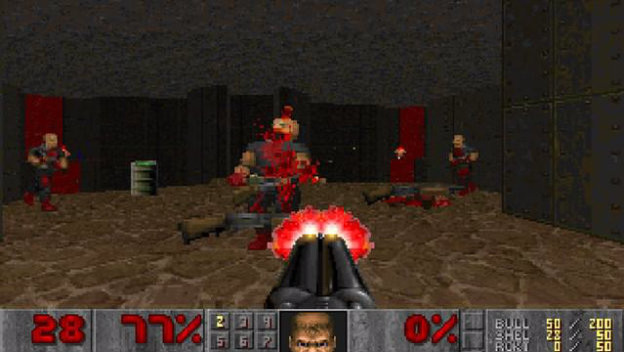
It’s hard to say if DOOM actually started the first-person shooter genre, but it may as well have. DOOM was practically a movement, if you could count a violent, nerdy PC game as a movement. This was a real trailblazer, turning video games into something edgier, faster, more brutal, and in some ways even elegant. The folks on the team that made DOOM are still lionized and cited in interviews every time they have something to say about games.
Call of Duty 4: Modern Warfare

Before Modern Warfare , most shooters were either science fiction joints or Spielberg-inspired World War II romps. Developers seemed hesitant to explore other times and wars, because World War II was much more socially comfortable. But then Call of Duty 4: Modern Warfare happened, and suddenly wars we were actually involved with at the time were being romanticized in video game form. It made controversial content in blockbusters acceptable in an instant. The series also got us on the track we’re on today, with nearly every genre out there including RPG elements like experience and upgrades.
GoldenEye 007
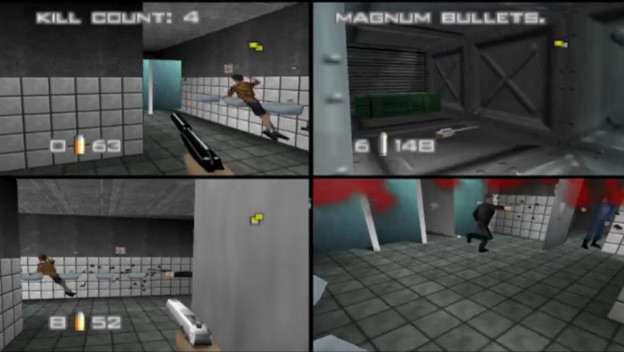
The era of splitscreen shooting games is mostly over, since the technological demands are mostly far too high for modern games. But back on the Nintendo 64 games looked like crap anyway, so it was easy to get away with cutting the neccessary corners. Goldeneye 007 was a revelation for local multiplayer. Up to four players could play on one console, with the controller ports built right in without any external purchases needed. To this day, people still have precious memories of screaming at their friends over Oddjob or the Golden Gun. Few even go back and actually break the game out to play it today (because N64 games haven’t aged well), but Goldeneye 007 remains on its pillar.
Timesplitters 2
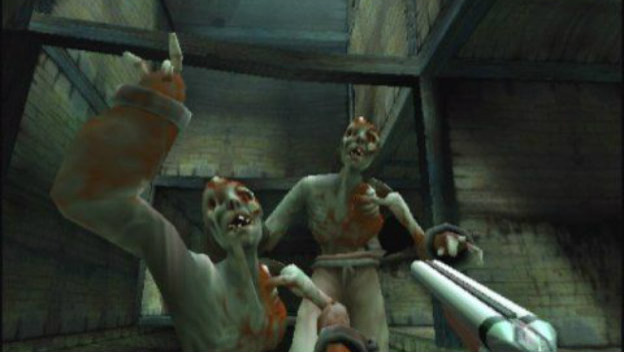
Speaking of Goldeneye 007 , here’s Timesplitters . While this series only had a hot minute under the spotlight, it had a huge presence thanks to its goofy sense of humor and massive suite of multiplayer options. Not only did Timesplitters 2 let you play games with your friends and a massive army of bots, but it allowed you to do so with all kinds of tweakable options, silly game modes, and all the zany characters. While not as influencial as a Halo or Call of Duty , I believe Timesplitters still exists in our hearts, especially when a serious shooter brings in something silly for an event or extra multiplayer game mode.
Quake 2
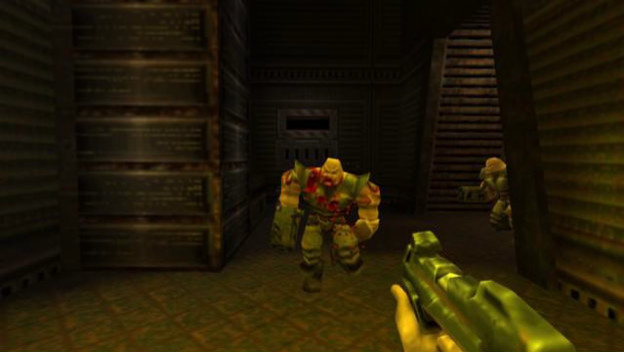
DOOM made shooters cool and planted the idea shooters should be a big deal. But eventually, the concept of multiplayer really took off, especially with more than two players. Online play expanded that further and made space for more than just deathmatches attached to single-player stories. What if a shooter came out that was totally oriented around competitive gameplay? Enter Quake and the arena shooter. Quake was all about sprinting through confined spaces, turning the first-person shooter into a bloodsport.
Half-Life

For years, shooters were all about being twitchy, skilled, competitive, or some combination of the three. Some games had little bits of old school, game-flavored storytelling, but there was nothing nearly as complex as what we see in games today. Enter Half-Life , a game that instantly changed the industry in a way that wouldn’t be repeated until Halo .
Half-Life took the concept of a first-person shooter and made a game that inserted the player into the shoes of a character. This character lived in a world and experienced events that happened around him. While he was still a JRPG-style silent protagonist, Gordon Freeman was a presence and a sense of continuity for the player to latch onto.
With the story developing in real-time, being able to look and walk around during dialogue enhanced that feeling of immersion that was unfamiliar to shooter fans at the time. Now that stuff is everywhere, and it’s all because of Half-Life .
